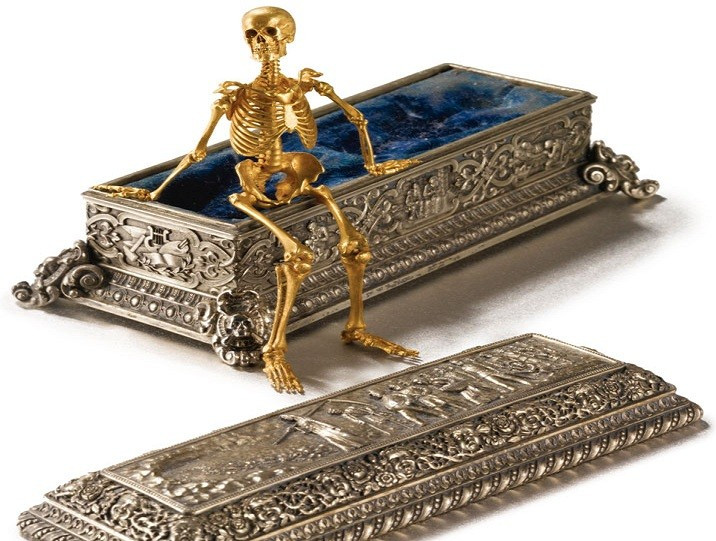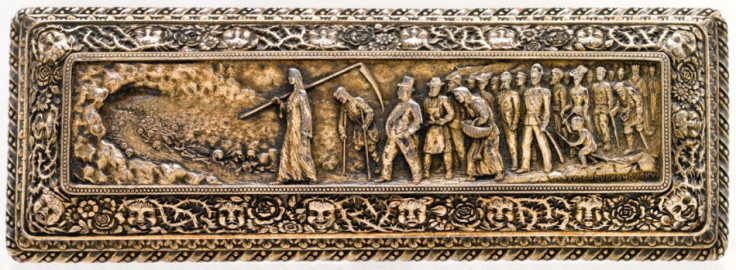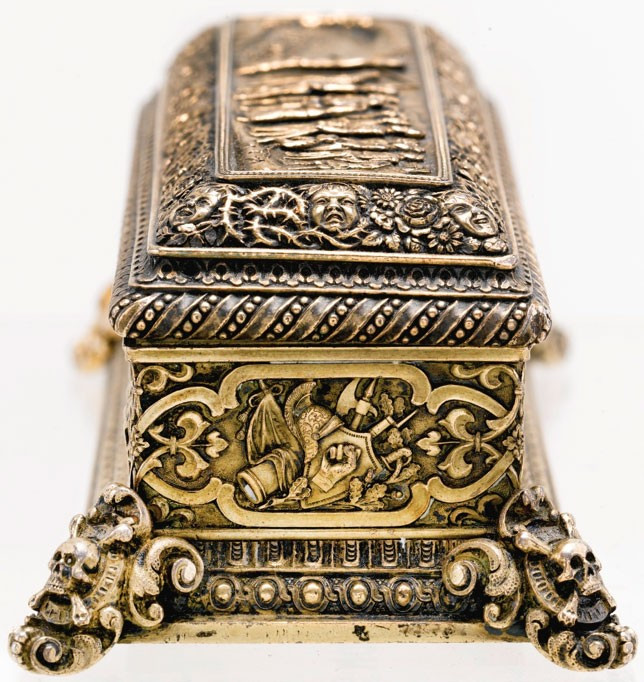Jewish Gothic Horror: Gold Skeleton Tells Amazing Story of Genius Forger Israel Rouchomovsky

A macabre golden skeleton complete with its own velvet-lined miniature coffin is set to go under the hammer.
As befits the unusual skeleton, the story of its creator is as singular as the object itself.
Auction giants Sotheby's is overseeing the sale in New York of the fully articulated skeleton, as one of many lots from a stunning collection built up over many years by wealthy US financer Michael Steinhardt and his wife Judy.
Created between 1896 and 1906, the skeleton and its intricate coffin was a labour of love for one Israel Rouchomovsky.
He was a Jewish silversmith from Russia, who in his own lifetime was caught up in a forgery scandal and had to flee for his life from anti-Semetic violence in the city of Odessa where he lived, at the turn of the 20th Century.
The solid gold skeleton, perched on the side of an ornate silver coffin, stands only 3.5cm high and is a unique example of Jewish gothic.
Complete with 176 moving parts, Rouchomovsky's fascinatingly morbid skeleton is a piece reflecting the turbulent times of its creation in its lavish attention to detail and the extremely high degree of skill invested in it.
Running along the side faces of the coffin are depictions by Rouchomovsky of the course of life in relief - with war and the arts at the foot and head of the casket. Decorating the coffin lid is a scene depicting the Angel of Death bordered by the faces of children crying or laughing.
It is expected to reach up to $250,000 at auction in New York by Sotheby's.

The auction by Sotheby's has brought back to public attention the name of Rouchomovsky, years after the obscure silversmith got a taste of Europe-wide fame for all the wrong reasons.
He was tricked in to creating a tiara by crooks - who then conned experts at the home of art at the Louvre in Paris that it was a priceless masterpiece from ancient Scythia.
It was only when Rouchomosky went there and proved he made the object in 1903, that the Lourve finally admitted it had been duped out of 200,000 francs for the item.
Adulation was heaped on to Rouchomosky by critics for his superb craftsmanship in the tiara - which he decorated with scenes from the Greek epic, The Iliad.
As a result of the attention, he got the chance to show off his pride and joy to the watching art world - the item he'd spent more than a decade on; the skeleton and its coffin. Rouchomosky's personal favourite part was its moving lower jaw.
He had taken the item with him to Paris from Odessa, then in Tsarist Russia.. Having been thrust into the spotlight for his part in the tiara scandal, Rouchomosky was able to enter his skeleton in to the Salon exhibition of 1903. Judges were impressed and awarded it a gold medal.
Upon returning to Odessa laden down with commissions from wealthy patrons, Rouchomosky had to leave flee an anti-Jewish pogrom in which around 500 people were killed.

© Copyright IBTimes 2025. All rights reserved.






















